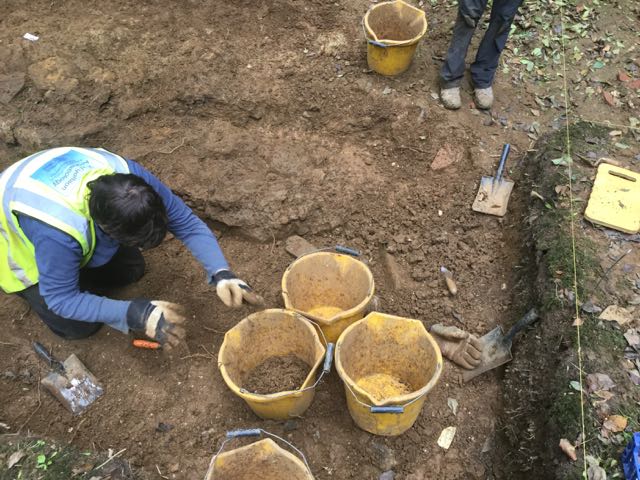

The central island of the water parterre, the corner starts to appear and here it is with the 120 degree angle superimposed.
You might think with
the connection to honeycombs and
the ability to tessellate hexagons would be common motifs in garden
design particularly in the geometry of Renaissance and Baroque gardens
but this appears not to be the case. Once it became clear that we had a
polygonal structure, almost certainly hexagonal, at the heart of the
water parterre I began looking for parallels and found... none. Having
searched through several hundred historic images of period
gardens I couldn't find a single instance of a hexagonal feature within
a garden of the seventeenth century. Octagons were present but were not
common. The best known example is, of course, the tiered King's Knot
below Stirling Castle remodelled in 1633 for Charles I. The earlier
garden at Ham House from 1609 had a series of
concentric
walks based around an elongated octagon whilst designs by Andre Mollett
from
the 1630s include central octagonal pools and in Wimbledon the garden
he designed for Henrietta Maria had a maze based around a central
octagon.
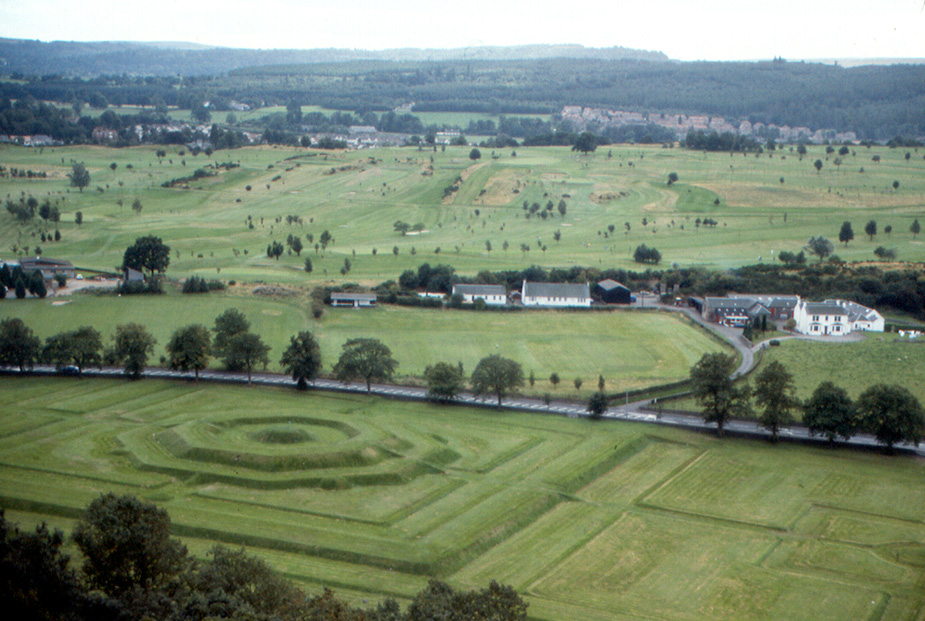
The severely geometric King's Knot viewed from the castle.
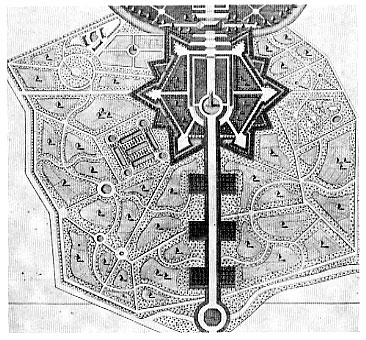
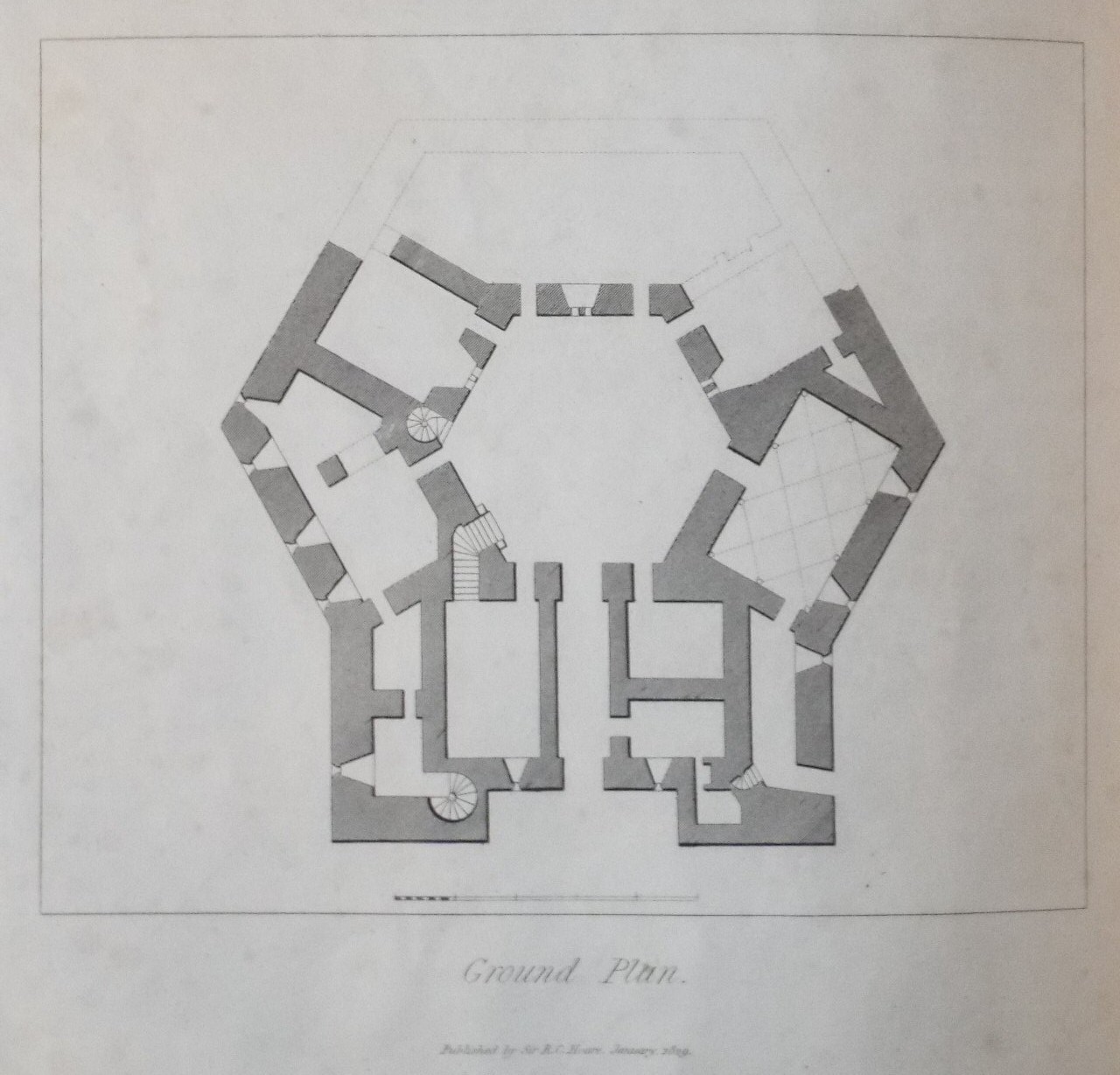
Who needs to fortify their vegetable plot? Ground plan of Wardour Castle.

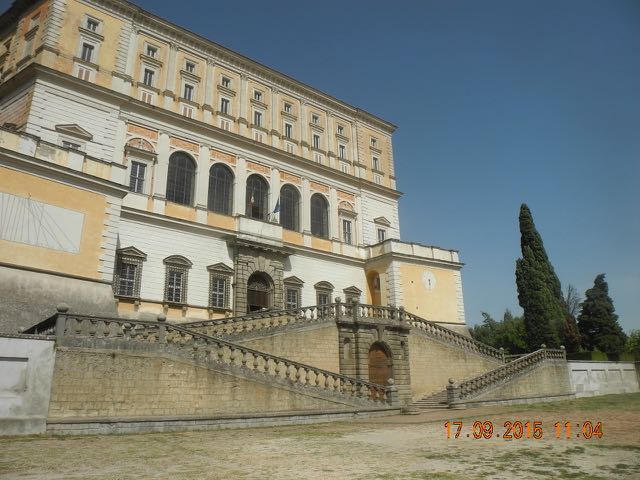
Six sides: Wardour Castle Five sides: Villa Farnese
Where these thoughts take a rather alarming turn is when one considers instances where hexagons do appear in images of gardens that are clearly of fantastical in nature and symbolic in significance. For example the notoriously obscure Hypnerotomachia Poliphili partially published in English in 1592 illustrates a large hexagonal basin below a fountain whilst in the Jesuit Henry Hawkins's Partheneia Sacra of 1633 a hexagonal walled garden space is adapted as a icon and chapter heading. A colourful hexagonal garden is also portrayed in a compendium of alchemical images in a collection from the early eighteenth century held in the Beinecke Rare Book and Manuscript Library of Yale University. The image is undated but appears to be early modern rather than late medieval... and it's got a unicorn!
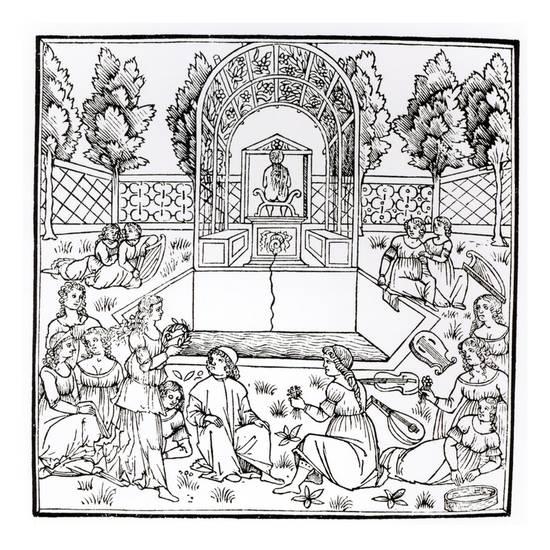
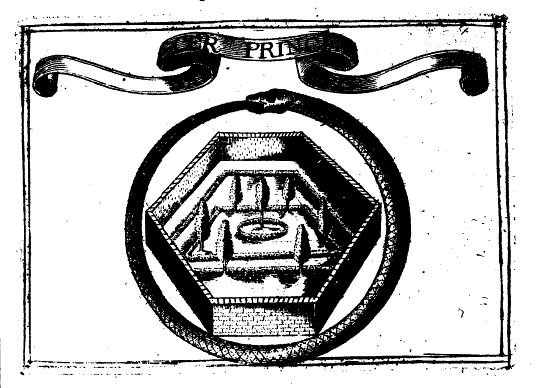
Renaissance revels from Hypnerotomachia Poliphili contrast with Hawkins's intensely Catholic symbolism.
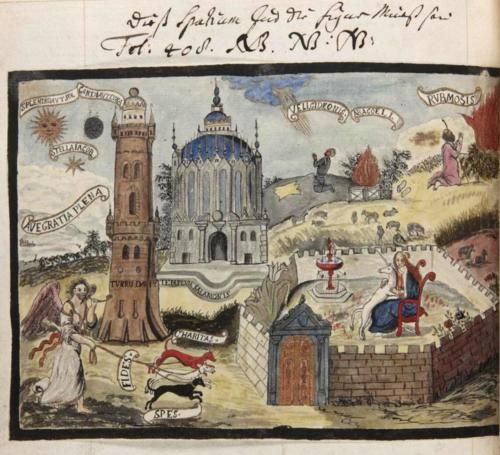
Unicorn and fountain - no idea what else is going on here.
So if the central element of the water parterre at Hanwell turns out to be hexagonal what are we to make of it? Is this simply an eccentric local whim or does it have greater/deeper significance? Watch this space.

The severely geometric King's Knot viewed from the castle.
The earliest instance I came across of hexagons incorporated into garden design was in the rather fanciful fortified vegetable garden by Stephen Switzer in his Ichonographia Rustica of 1718. Batty Langley's New Principles of Gardens
from 1728 includes a hexagonal pool in the proposed layout for part of
a park. Neither of these were constructed and appear as theoretical
exercises only. In fact the only major historic structure, which is
essentially hexagonal that I am aware of is Wardour Castle, Wiltshire,
a remarkable tower house dating from the fourteenth century. In the
context of domestic constructions one shouldn't forget the remarkable
pentagonal Villa Farnese at Caprarola which is also based on a
fortification.

Who needs to fortify their vegetable plot? Ground plan of Wardour Castle.


Six sides: Wardour Castle Five sides: Villa Farnese
Where these thoughts take a rather alarming turn is when one considers instances where hexagons do appear in images of gardens that are clearly of fantastical in nature and symbolic in significance. For example the notoriously obscure Hypnerotomachia Poliphili partially published in English in 1592 illustrates a large hexagonal basin below a fountain whilst in the Jesuit Henry Hawkins's Partheneia Sacra of 1633 a hexagonal walled garden space is adapted as a icon and chapter heading. A colourful hexagonal garden is also portrayed in a compendium of alchemical images in a collection from the early eighteenth century held in the Beinecke Rare Book and Manuscript Library of Yale University. The image is undated but appears to be early modern rather than late medieval... and it's got a unicorn!


Renaissance revels from Hypnerotomachia Poliphili contrast with Hawkins's intensely Catholic symbolism.

Unicorn and fountain - no idea what else is going on here.
So if the central element of the water parterre at Hanwell turns out to be hexagonal what are we to make of it? Is this simply an eccentric local whim or does it have greater/deeper significance? Watch this space.